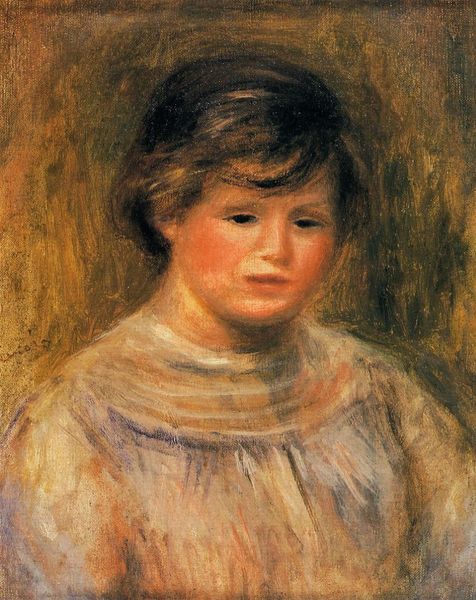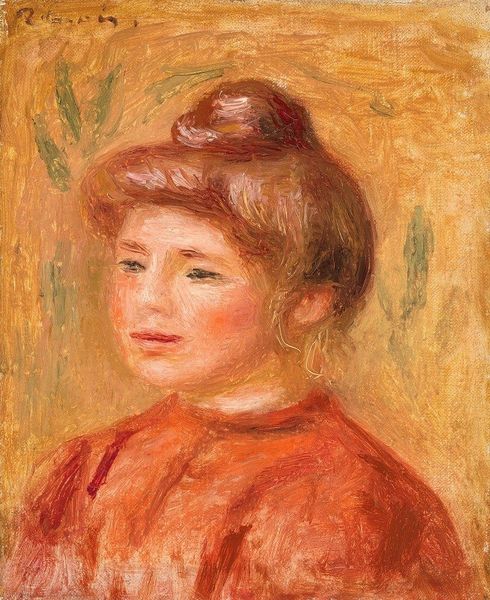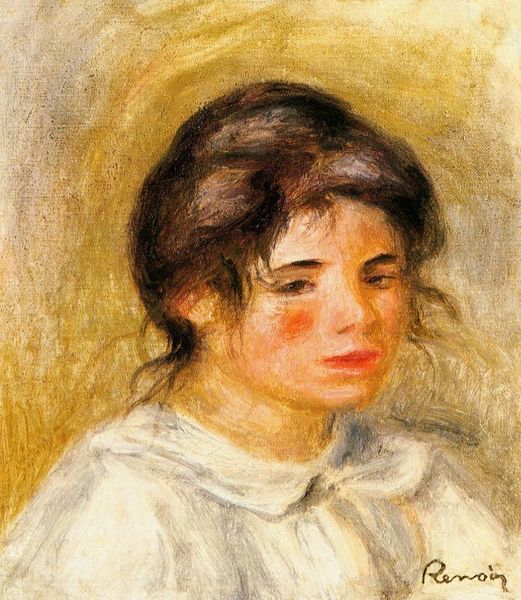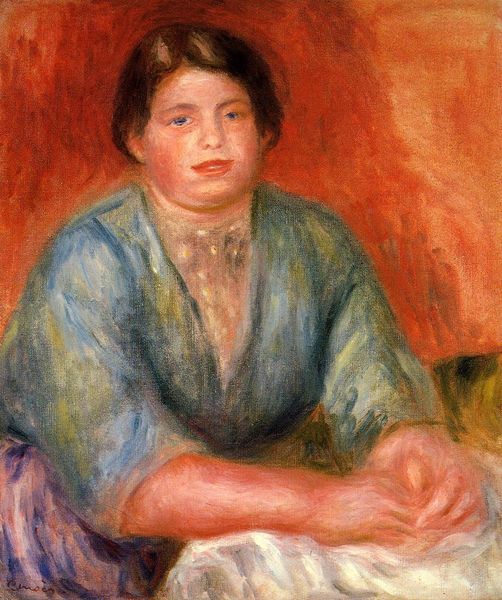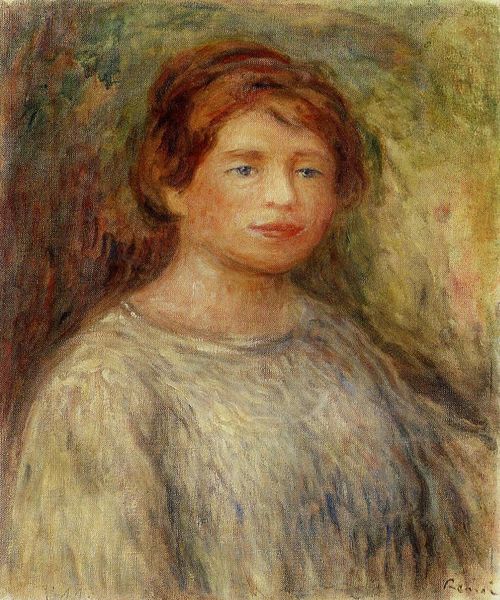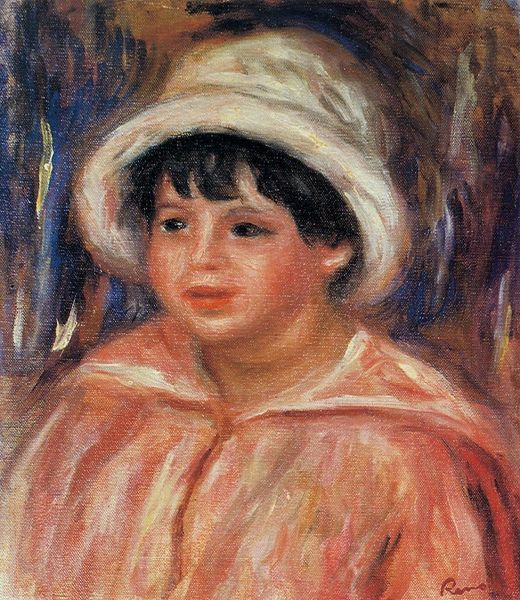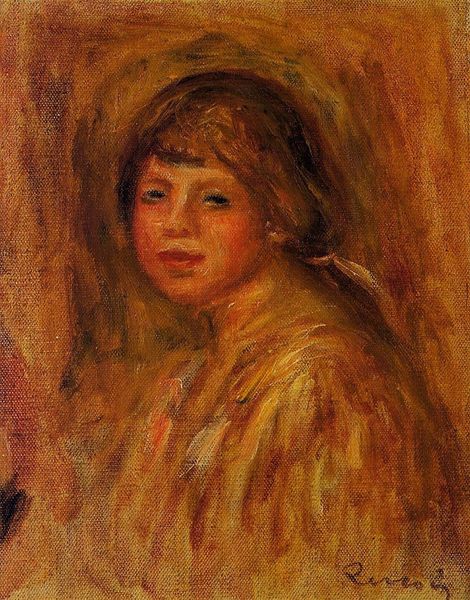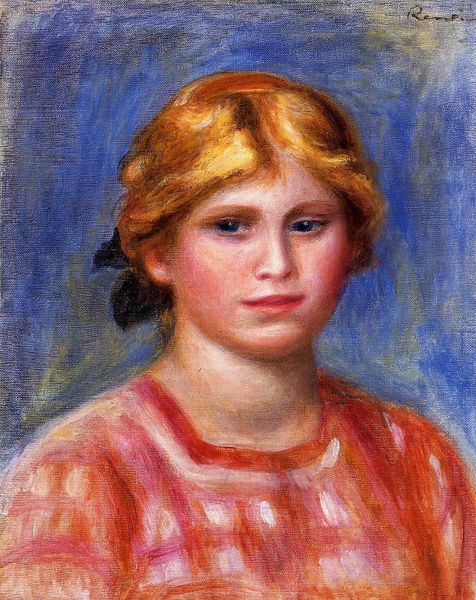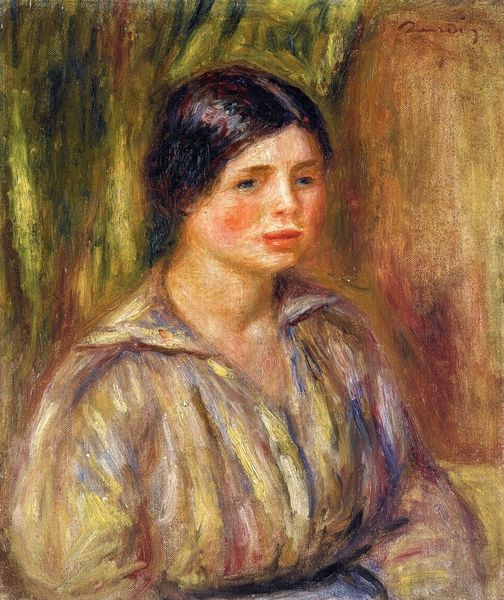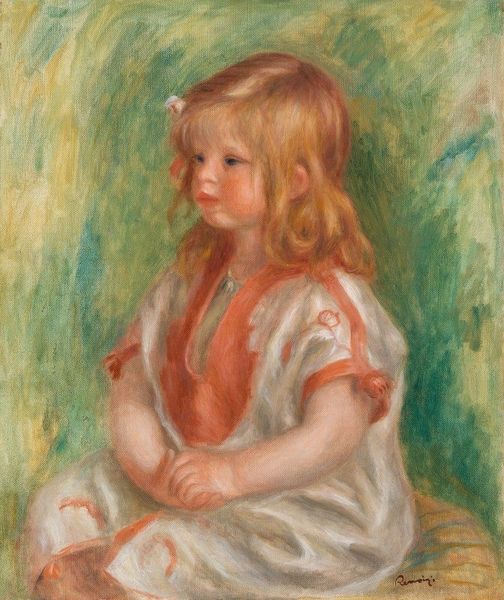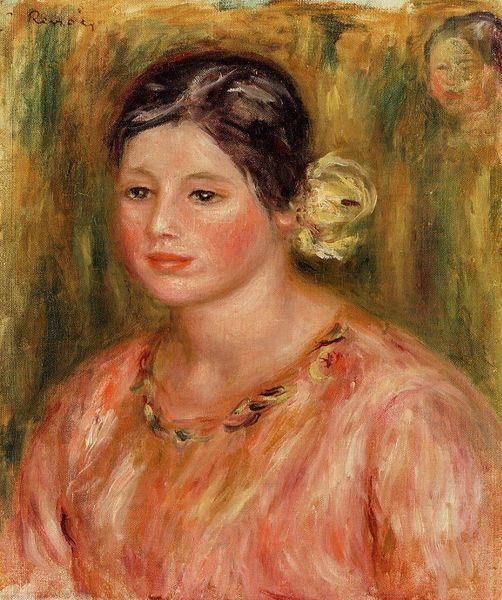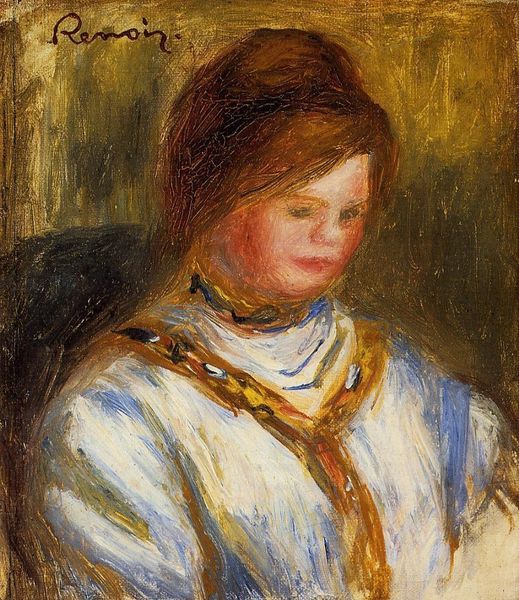
Copyright: Public domain
Curator: Here we have Pierre-Auguste Renoir’s “Helene Bellow,” created around 1908, using oil paints. There's something gentle and quiet about her expression that’s really captivating. What strikes you most about this piece? Editor: I’m fascinated by the texture and the application of the paint itself. It feels like the strokes almost become the subject, not just a representation of her. What can you tell me about his choice of materials and process and how it reflects the societal context of art at the time? Curator: Exactly! Note how Renoir's use of oil paint in short, broken strokes embodies Impressionism's break from academic realism. Consider the socioeconomic factors, too: the availability and commercialization of oil paints enabled artists like Renoir to explore such techniques, and made paintings more easily collected by the growing middle class. Does this commercialization change our understanding of who or what this portrait depicts? Editor: I guess so. The very fact that this likeness could be created, and owned privately speaks to economic changes and opportunities for people like Renoir. The painting wasn't simply made for nobility. It speaks to a change in patronage. But also it changes our relationship to labor itself. Curator: Absolutely. And reflect on the labor involved, from the extraction of raw materials to the grinding and mixing of pigments. This piece asks us to think beyond aesthetics, revealing art as a product of industry, economy, and social mobility. How does understanding Renoir's world of artistic production change how you interpret this specific image? Editor: It adds another layer to it. It moves the portrait beyond just capturing Helene’s likeness; it becomes an artifact deeply rooted in the changing societal structures of the time. Curator: Precisely. So next time you see brushstrokes like these, remember to consider the journey of the paint itself!
Comments
No comments
Be the first to comment and join the conversation on the ultimate creative platform.

